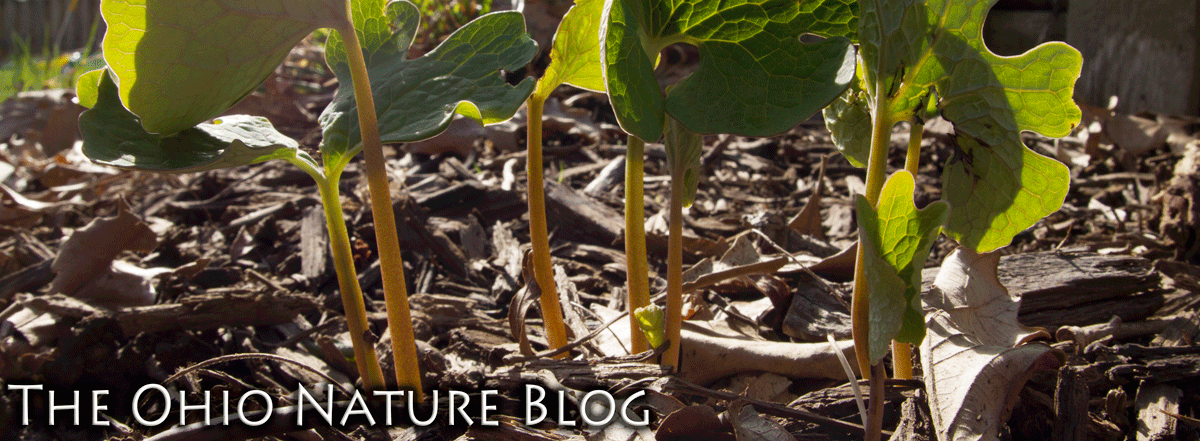
If you've just joined us, I've been showing images of a weekend in Adams County, Ohio from the first weekend in November. Our first stop was
Adams Lake Prairie, then we were on to
Chaparral Prairie, and then finally to
Davis Memorial. After a quick stop at
The Wilderness Preserve, we were on to the moss workshop at the Edge of Appalachia, Ohio's largest privately protected natural area. Taught by Dr. Barb Andreas, I was preparing for an intense weekend of looking through microscopes, and I was not disappointed. Friday night we started out with an introductory slideshow full of amazing photographs of the tiny, intricate anatomy of mosses. Off to bed it was after a long day and my first night sleeping in Adams County.

Saturday morning we began at the Cincinnati Museum Center's Eulett Center, a brand new building that serves as the new focal point of the Edge of Appalachia Preserve. The last time I visited the preserve, the staff was housed, well, in an old house. Now, they've got this incredible building, full of really cool microscopes and technology that made studying mosses a breeze.

Ok, I'm kidding just a little bit. Moss Identification is tedious- why? The parts of a moss plant- the leaf, the stems, are just so tiny, that in order to be able to see those parts, you just have to use both a dissecting and compound microscope. We examined our specimens at 40, 100, and 400 times magnification.

We did make it into the field to collect moss specimens, and we were accompanied by a very hungry cat that was trying to make the Eulett Center home.

Over the weekend, I saw more than a few people sneak food to it- so it was wise to follow us. We searched for and examined mosses as doggedly as the cat followed us. We put a good twelve hours in on Saturday, mostly at the microscope, followed up by three hours Sunday morning. I spent the most time examining the mosses and trying to learn the characters that I would need to identify them in the future. These included, amongst a host of other characters- the shape and size of individual moss cells- whether the cells have bumps on them called papillae, and whether the stem has a bunch of hairy things on it, the name of which I have now forgotten.
All in all, a great weekend, I learned what it takes to identify mosses, and I'll have yet another thing to look for and learn about when I venture through the natural areas of Ohio.
Tom
P.S. The moss workshop I attended is part of the Edge of Appalachia's
advanced naturalist workshop series. I would recommend any of their workshops.

































